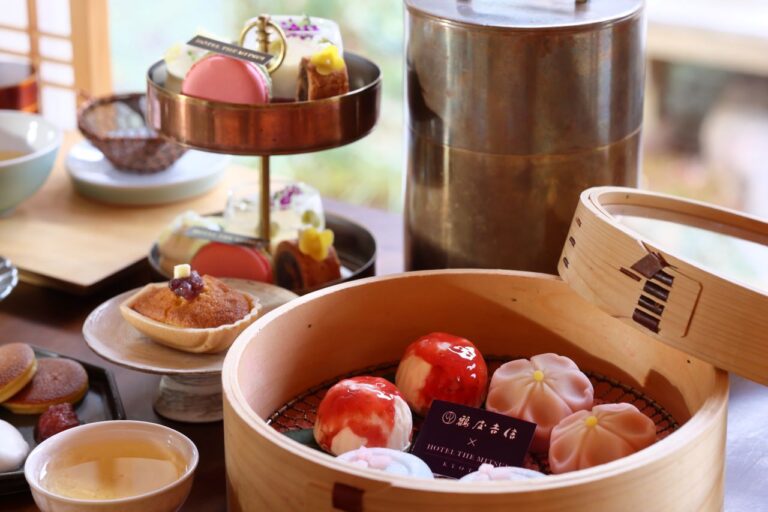
HOTEL THE MITSUI K...
PR
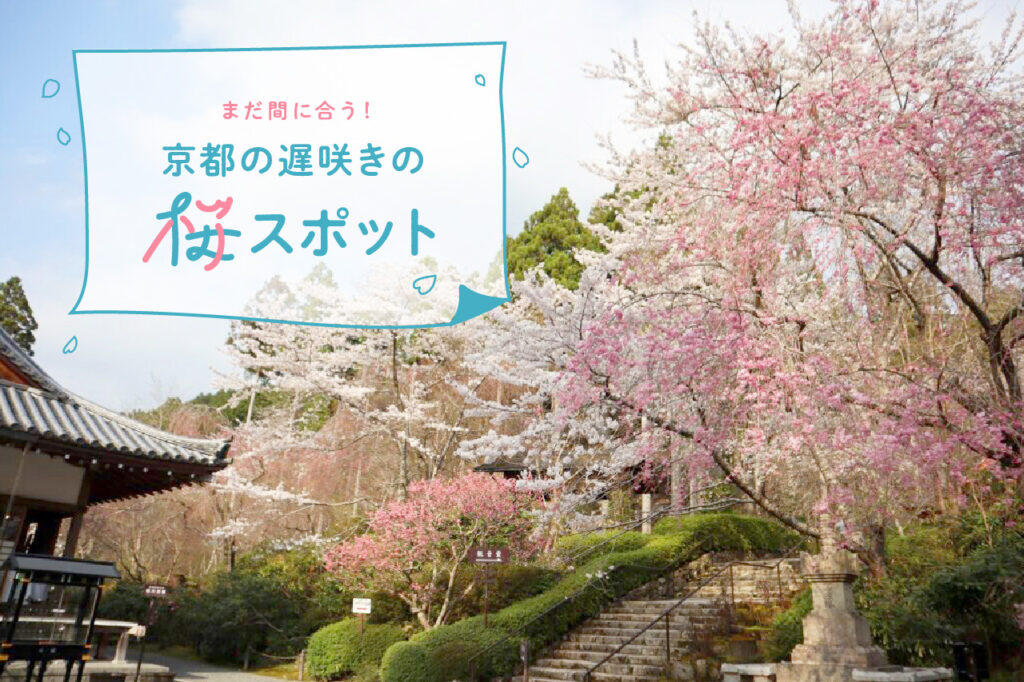

The cherry blossoms are in full bloom again this year in various parts of Kyoto. Even though the peak seems to have passed, there are still places where you can enjoy the cherry blossoms in bloom. Let the beautiful scenery of cherry blossoms soothe your soul at the recommended spots loved by local people. *The best time to see the cherry blossoms may shift due to weather conditions.
Kamowakeikazuchi-jinja Shrine is one of the oldest shrines in Kyoto and is commonly known as Kamigamo Shrine.
The 150-year-old "Goshozakura" cherry tree, which opens its white blossoms in late March, and the "Saiozakura" cherry tree, which has red weeping blossoms, line the side of the approach that stretches in a straight line from the first torii (first shrine gate) to the second torii (second shrine gate). The "Miezakura" cherry tree, with red blossoms, is located beyond the second torii gate, and a variety of cherry trees with different stories are on display.
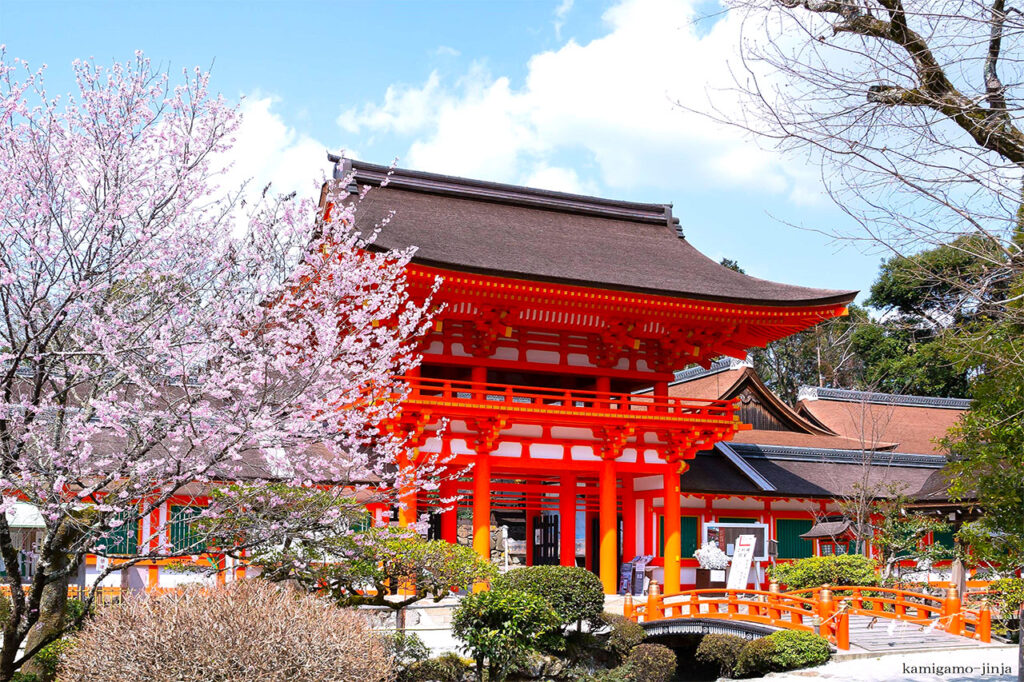
(Photo courtesy of Kamigamo Shrine)

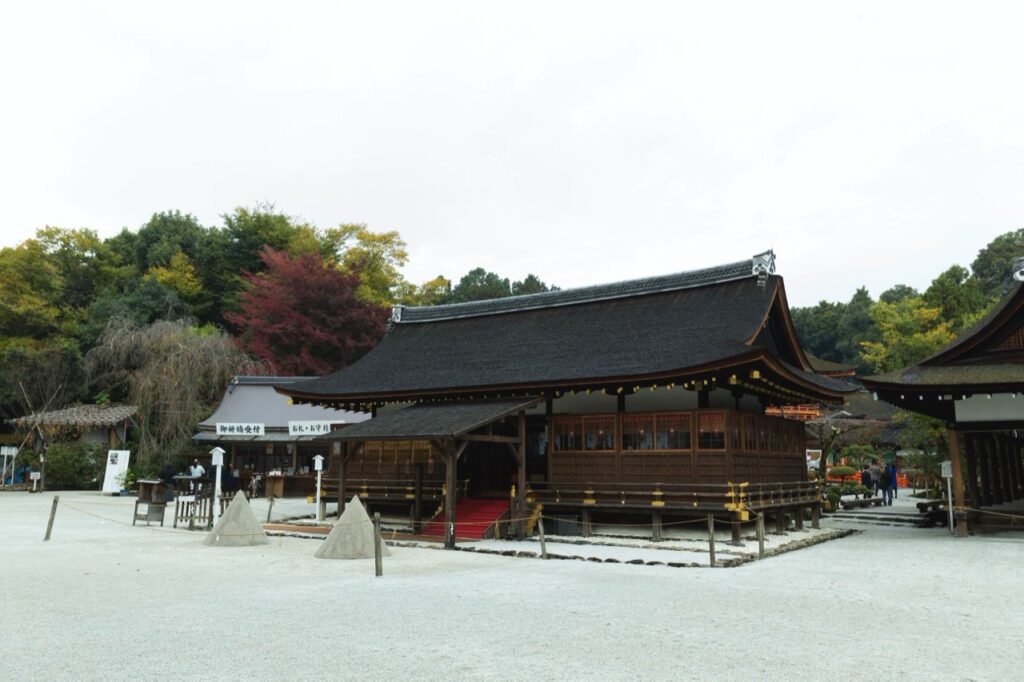

Best time to visit: mid-March to late April
Opening hours/5:30-17:00 (8:00-16:45 for the tower gate and the awarding office)
Admission fee/free
Sanzen-in Temple in Ohara, Kyoto, has spun out a history of approximately 1,200 years, beginning with a hall built by the great Buddhist missionary Saicho on Mount Hiei.
In spring, when the temple has more than 200 cherry trees in bloom, including weeping cherry trees, someiyoshino cherry trees, and mountain cherry trees, each of which has a different appearance in each season. The temple is also home to rhododendrons, which bloom slightly after the peak of the cherry blossoms, as well as fields of rape blossoms in the surrounding area, offering a rich natural scene.
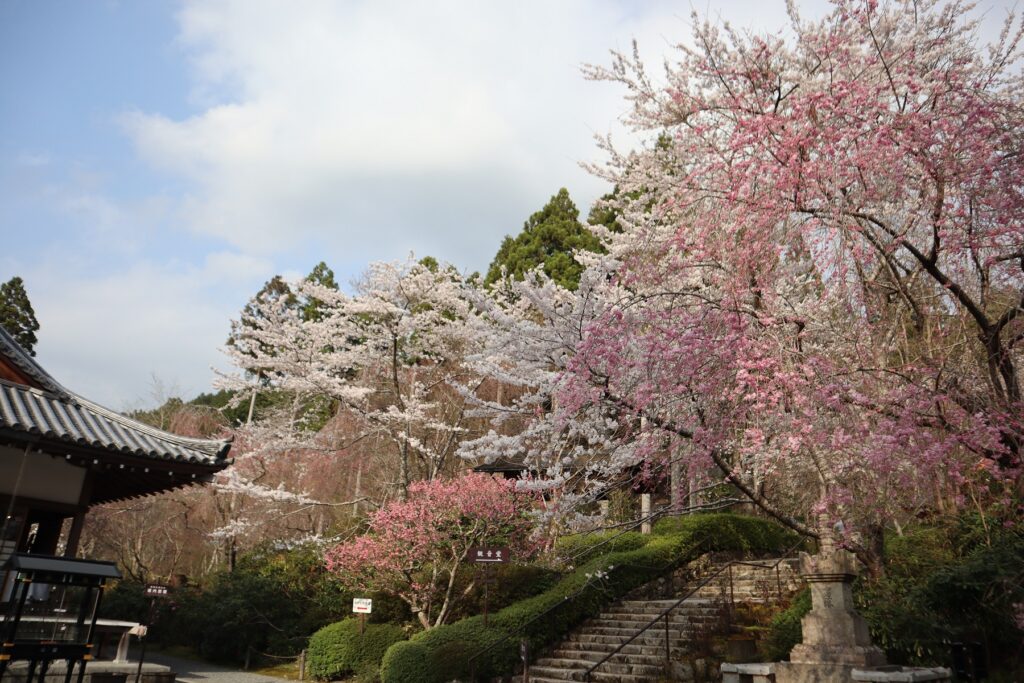

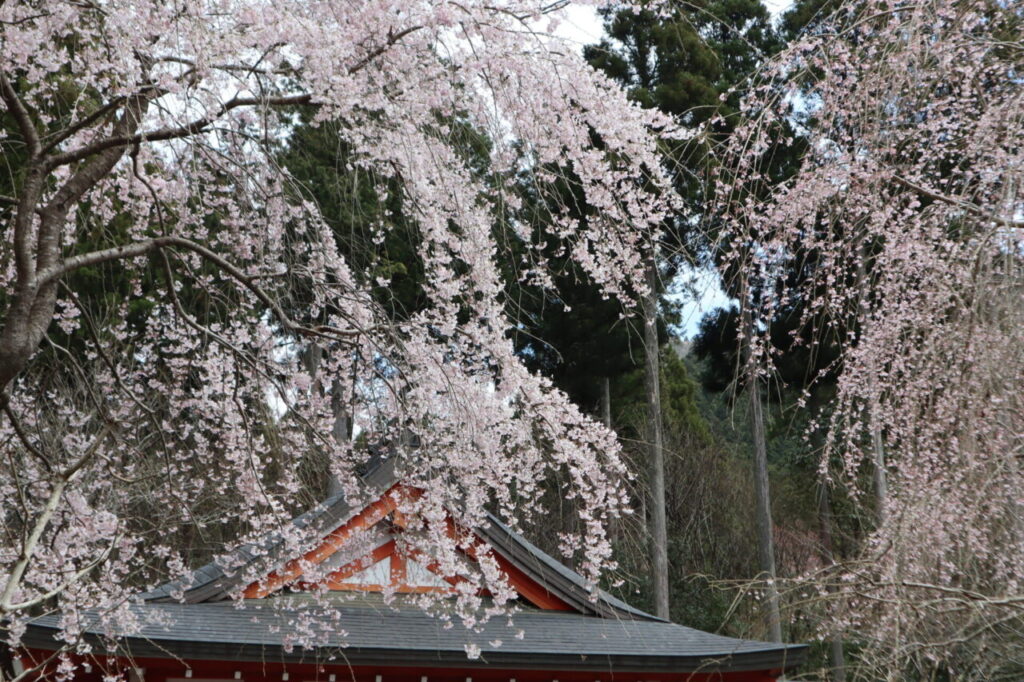

Best time to visit: Mid-March to mid-April
Visiting hours/9:00-17:00 (November/8:30-17:00, December-February/9:00-16:30)
Admission: Adults 700 yen, Junior and senior high school students 400 yen, Elementary school students 150 yen, Free for infants
Kuramadera Temple is said to be the birthplace of the Tengu legend. It is said to be the birthplace of the Tengu legend and is also known as the training ground of Ushiwakamaru. During the cherry blossom season, the "Uzuzu Cherry Blossoms" adorn Mt. The cherry blossoms in the midst of evergreen trees resemble "cloud-shaped pearls," hence the name "Uzuzu-zakura" (cloud-shaped cherry blossoms).
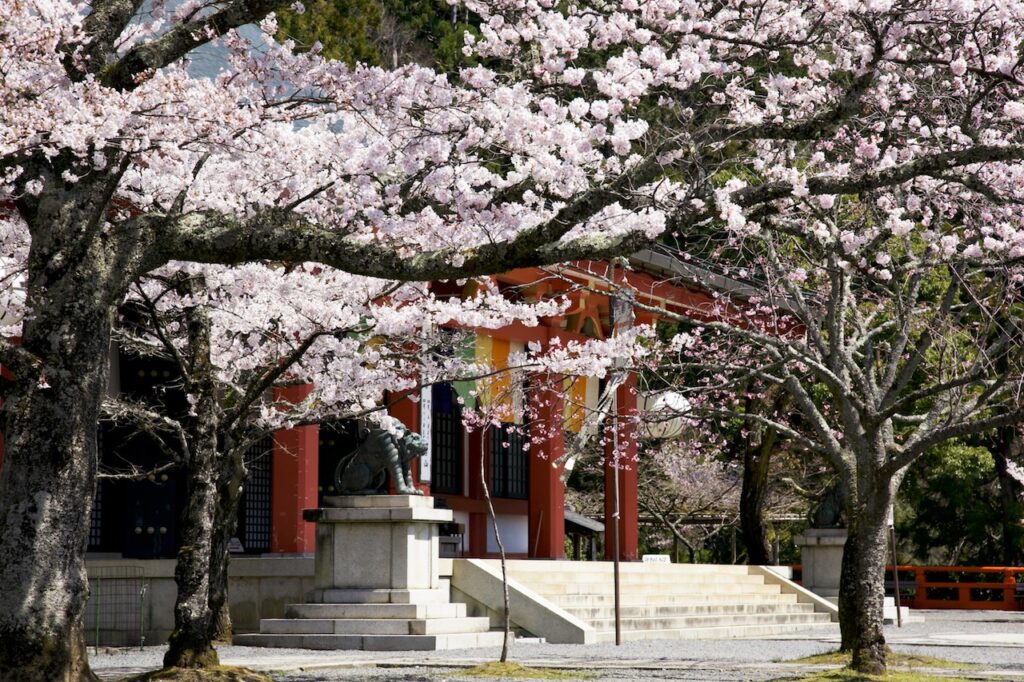

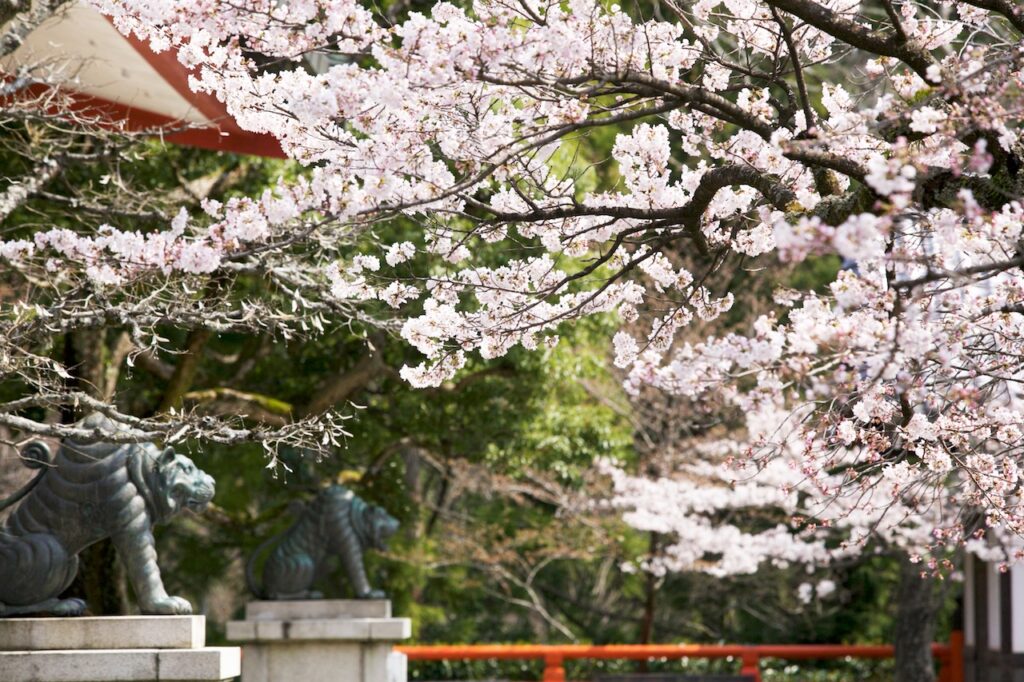

Best time to visit: Mid to late April
Main Shrine: Opening hours: 9:00-16:15
Reihoden (Kuramayama Museum) Opening hours: 9:00-16:00
Entrance fee / Aizan fee 500 yen
[Flower memorial service]
Sunday, April 6 - Sunday, April 13, 2025
Hirano Shrine is famous for its cherry blossoms, known as "Hirano no Yozakura (night cherry blossoms). About 400 cherry trees of about 60 varieties are planted on the shrine grounds, including many rare varieties that originated in this area. The early-blooming weeping cherry "Kai-zakura" and other cherry trees bloom at different times, so visitors can enjoy viewing cherry blossoms over a long period of time. During the special nighttime illumination, visitors can enjoy the fantastic scenery of the cherry blossom garden and grounds illuminated by lights such as bonbori (paper lanterns) and lanterns.
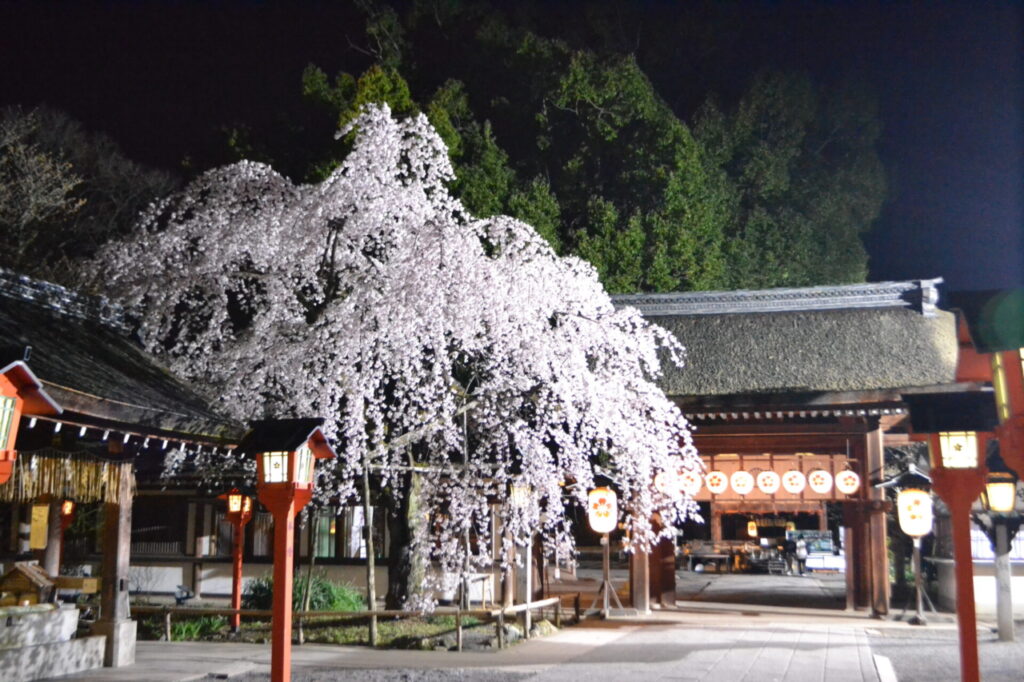

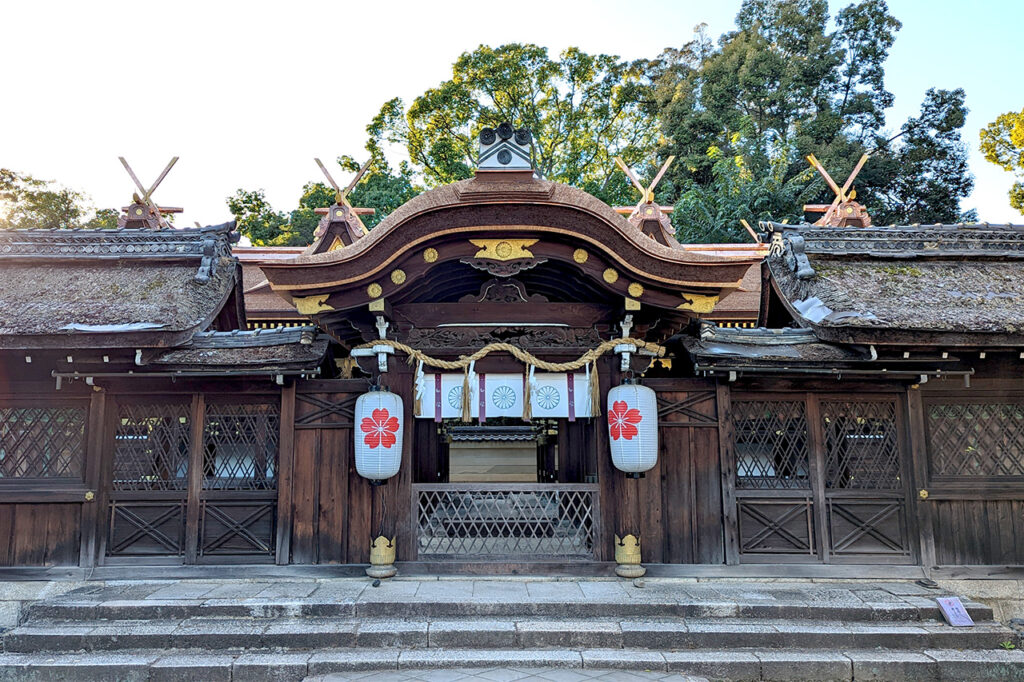

Best time to visit: Late March to mid-April
Hours of worship/6:00-17:00
Hirano Shrine Night Cherry Blossom Special Visit
Period / Saturday, March 22, 2025 - Sunday, April 13, 2025
Hours: Sunset - 21:00
Admission: Free (some sections charge a fee)
The Kyoto Botanical Garden opened in 1924 as Japan's first public botanical garden. The garden has approximately 12,000 varieties of plants planted and exhibited, and visitors can view flowers and trees from season to season. During the cherry blossom season, 500 cherry trees of about 180 varieties bloom one after another, and visitors can enjoy a wide variety of cherry blossoms over a long period of time, from scarlet cherry blossoms in early March to someiyoshino cherry blossoms in early April, double-flowered crimson-edged drooping cherry blossoms in late April, and chrysanthemum cherry blossoms in late April.
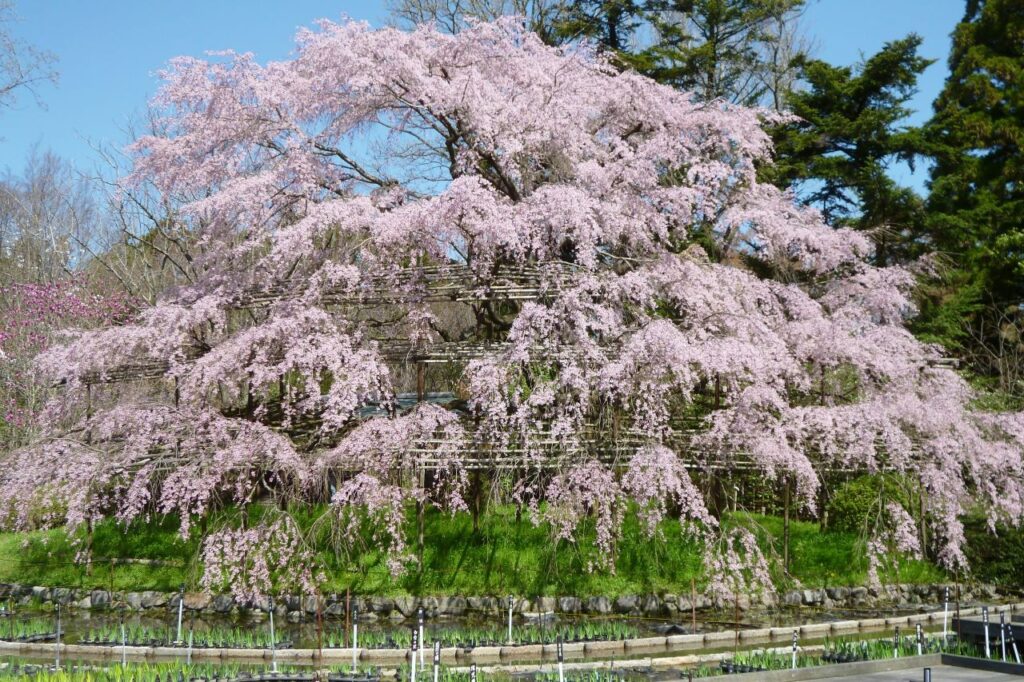

Best time to visit: Mid-March to late April
Opening hours/9:00-17:00 (admission until 16:00)
Admission: ¥500 for adults, ¥250 for seniors 65 and older and high school students, free for junior high school students and younger
[The Kyoto Gyoen (Kyoto Imperial Garden), which is now open to the public as a national park, was developed on the site of the former lord's town in the vicinity of the Kyoto Imperial Palace.]
The Kyoto Gyoen, rich in nature, is planted with approximately 1,000 cherry trees, including weeping cherry trees, Kurumagae cherry trees, and mountain cherry trees. Two of the most famous are the "Demizu-no-Edarezakura" and "Chikamori-no-Edarezakura". The early-blooming "Izumi no edarezakura" is a popular photo spot because of its beautiful shape, which resembles a spreading umbrella. In late March, about 60 weeping cherry trees at the Chikamori Estate bloom in a beautiful gradation of colors, from light to dark. Blue sheets are not allowed.
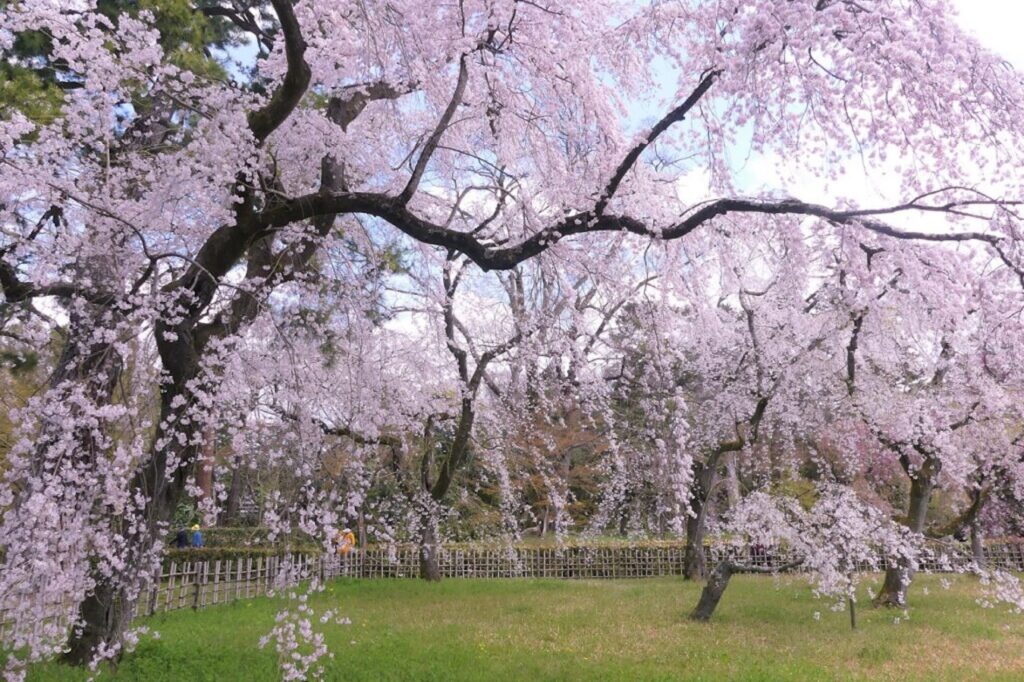
Image courtesy of Kyoto Gyoen Management Office, Ministry of the Environment

Ninna-ji Temple is a monzeki temple with deep ties to the Imperial Family, and for many years has been headed by a member of the Imperial Family.
In addition to someiyoshino cherry trees in front of Kondo Hall and yokozakura cherry trees in front of Kannondō Hall, about 200 late-blooming "Omurozakura" cherry trees, known as a synonym for Ninna-ji Temple, bloom from early to mid April in the Sakura Garden. The contrast between the elegant architecture and the cherry blossoms is a breathtaking sight. There are also many azaleas and rhododendrons on the temple grounds, allowing visitors to take their time and savor the spring scenery.
-1024x682.jpg)
Ninna-ji Omuro Cherry Blossom, Goten, North Garden (Photo by Sohonzan Ninna-ji Temple)

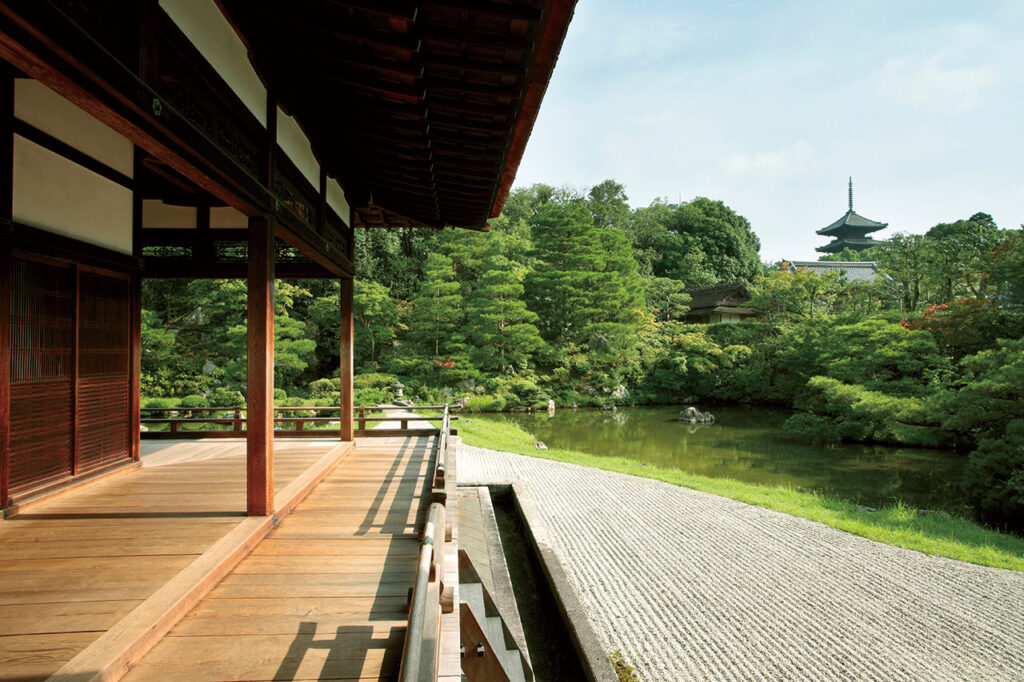

Best time to visit: Early to mid-April
Hours * Ninna-ji Gosho Garden / Mar-Nov 9:00-17:00, Dec-Feb 9:00-16:00
Admission: Gosho Garden, 800 yen for adults, free for high school students and younger
[Omuro Flower Festival 2025]
Period of visitation: Saturday, March 22, 2025 - Tuesday, May 6, 2025 (national holiday)
Hours: 8:30 - 17:30 (last admission at 17:00)
Admission/ Adults 500 yen, Free for high school students and younger *Ticket for the Gosho Garden and the Gosho Garden is 1100 yen.
Cherry blossom garden owned by Muraiwa Noen, which handles lumber such as Kitayama cedar.
Normally not open to the public, it is open to the public during the four seasons when the flowers are in bloom. During the cherry blossom season, the vast grounds, covering an area of about 4,000 tsubo (about 1,200 m2), are dyed in cherry blossom colors, creating an almost ethereal atmosphere. Visitors can enjoy various types of cherry blossoms such as weeping cherry trees and fugenzou cherry trees.
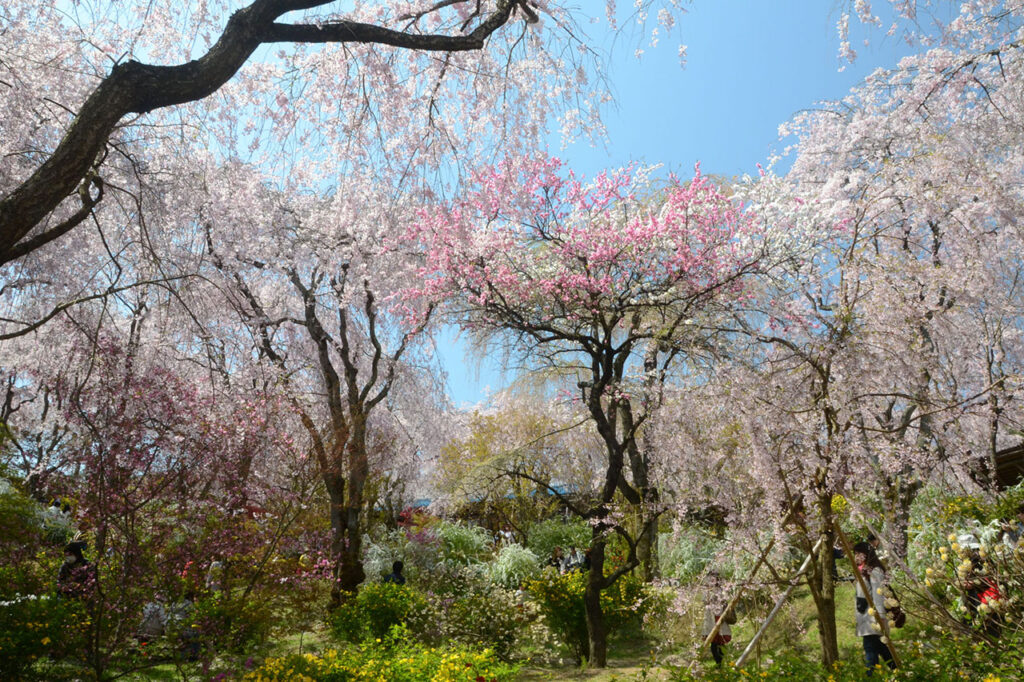

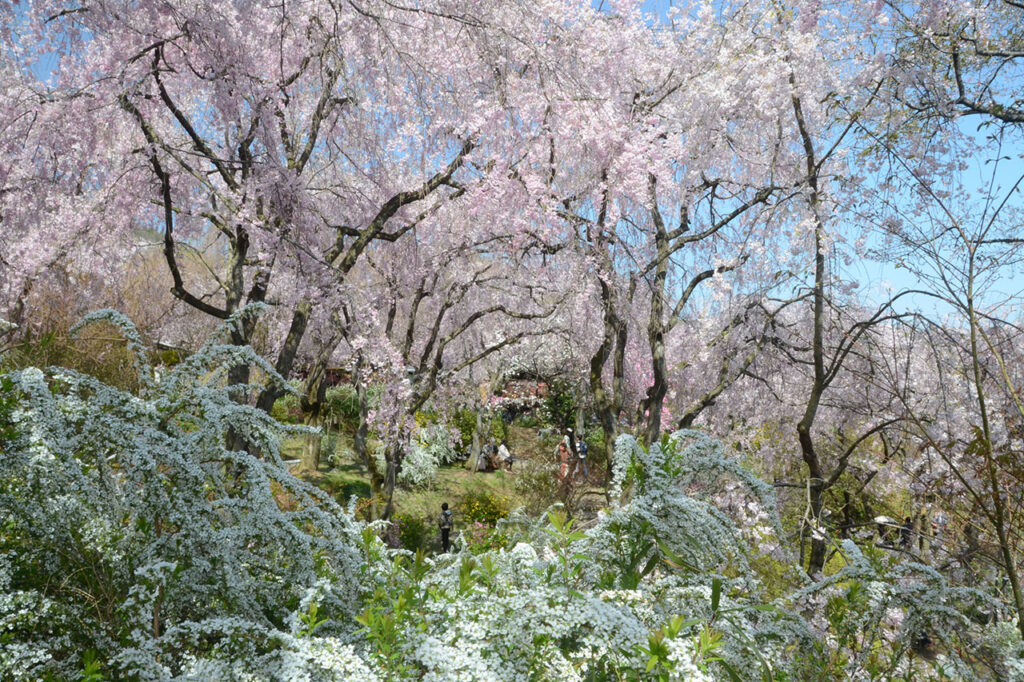

Best time to visit: Late March to late April
Opening date: March 25 (Tuesday) to April 25 (Friday), 2025 (tentative)
*Subject to change depending on blooming conditions
Opening hours/9:00-17:00 (last admission/16:30)
Entrance fee/Variable - 1,800 yen *Changes depending on the blooming of cherry blossoms
Shuttle bus service will be available from March 29 (Sat) to April 20 (Sun). For more information, please contacthere
Zempuji Temple was founded in the mid-Heian period (1029) by Gengen Shonin.
The sight of the mountain where the temple is located being covered in cherry blossoms is breathtaking. There are more than 100 cherry trees, including higanzakura (higan cherry), weeping cherry, mountain cherry, and botanzakura, which are at their best for about one month. The weeping cherry tree, said to have been hand-planted by Keishoin, will be at its best for about a week around April 8. The 300-year-old tree blooms in a solemn atmosphere.
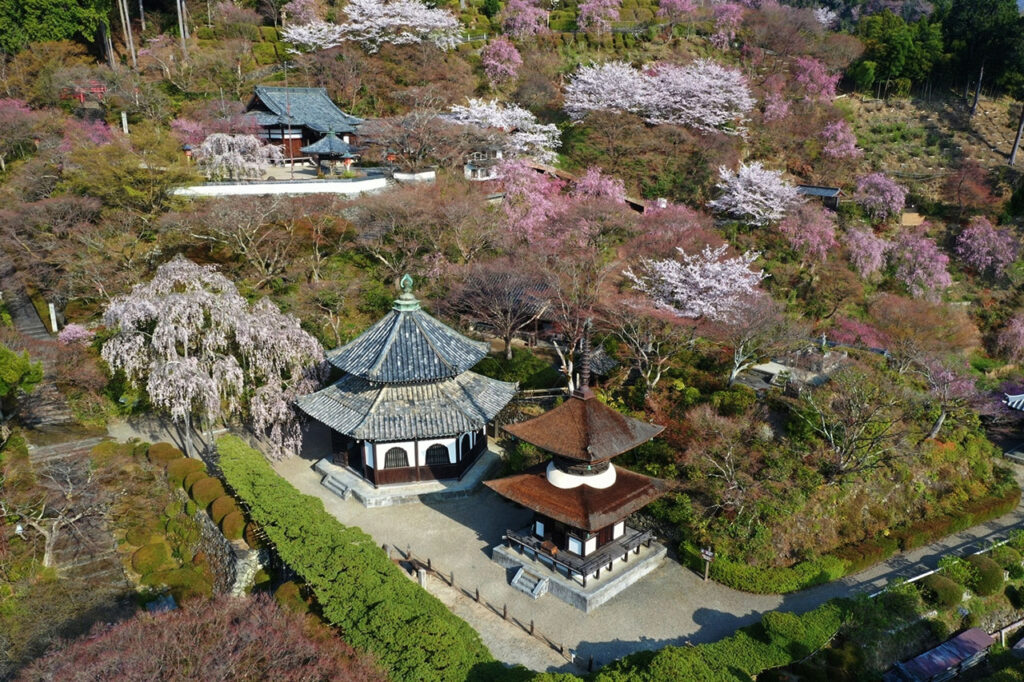

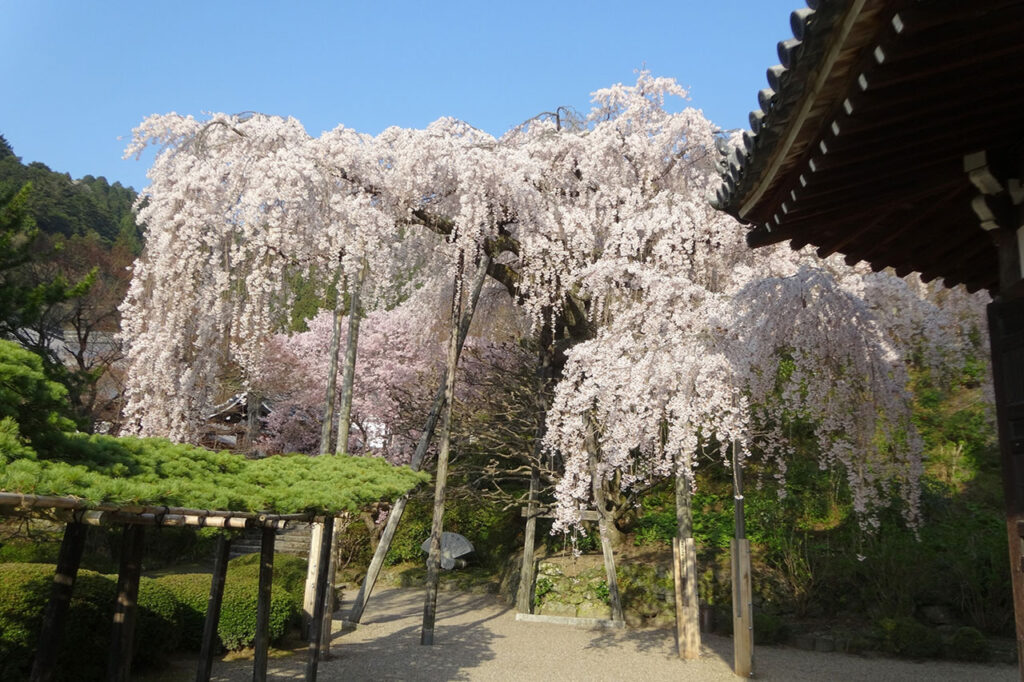

Best time to visit: Early April to late April
Visiting hours: 8:30-17:00 on weekdays, 8:00-17:00 on Saturdays, Sundays, and holidays (reception closes at 16:45 on all days)
Admission: Adults 500 yen, High school students 300 yen, Elementary and junior high school students 200 yen
[The path of the half-tree, a walking path on the west side of the Kyoto Botanical Garden.
Along the Kamo River from Kitayama Ohashi Bridge to Kitaoji Bridge, double-stemmed weeping cherry trees create a tunnel of cherry blossoms that stretches for about 800 meters. From near Aoi Bridge to near Kamigamo Bridge, there is a row of Someiyoshino cherry trees, and the view from the other side of the river is beautiful.
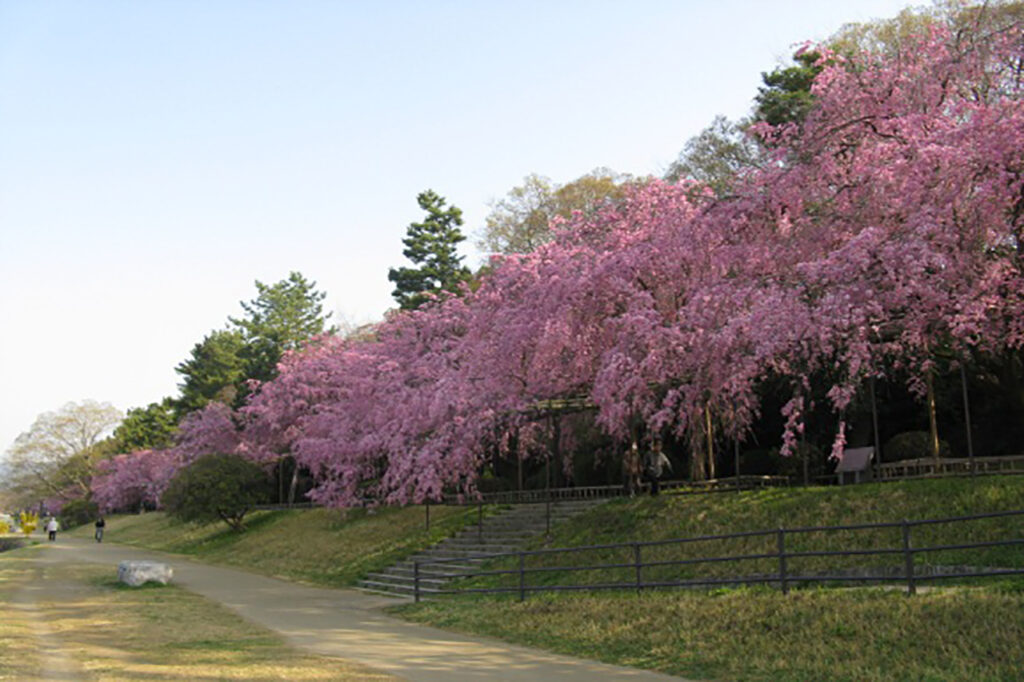

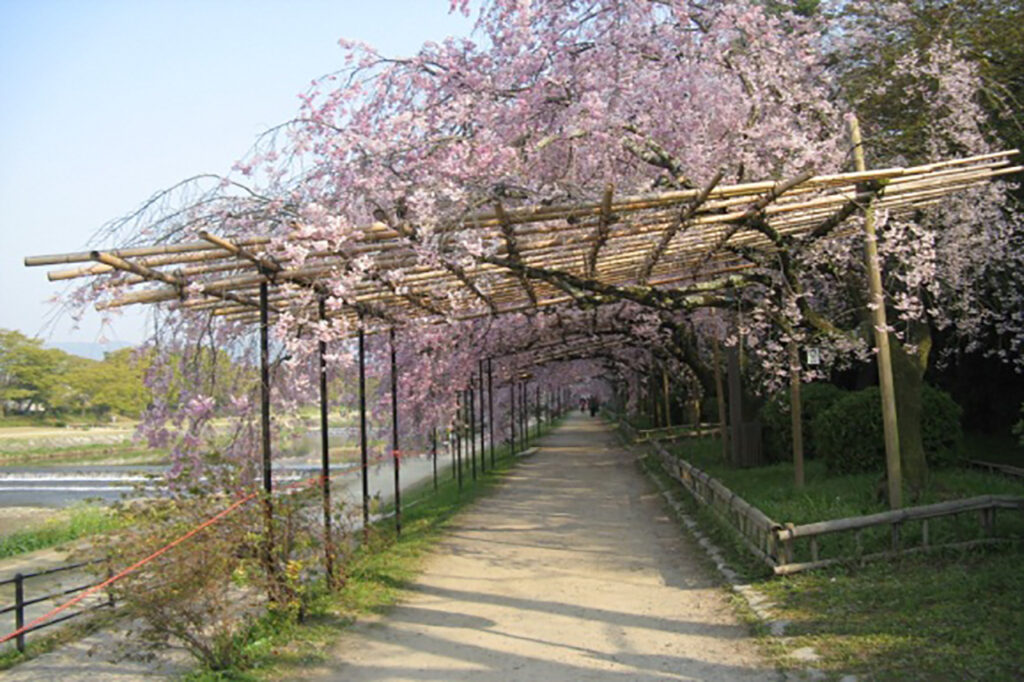

Best viewing time: Early to mid-April
free to stroll (i.e. to take a stroll)
Rokuson-o Shrine, dedicated to Minamoto no Norimoto, the founder of the Seiwa Minamoto clan, is a historic spot founded in the Heian period (794-1192).
The Shinryu Pond is surrounded by someiyoshino cherry trees and red weeping cherry trees. Other colorful cherry blossoms, such as the double-flowered Utsukinzakura with yellowish-green flowers, welcome visitors to the shrine at the best of times.
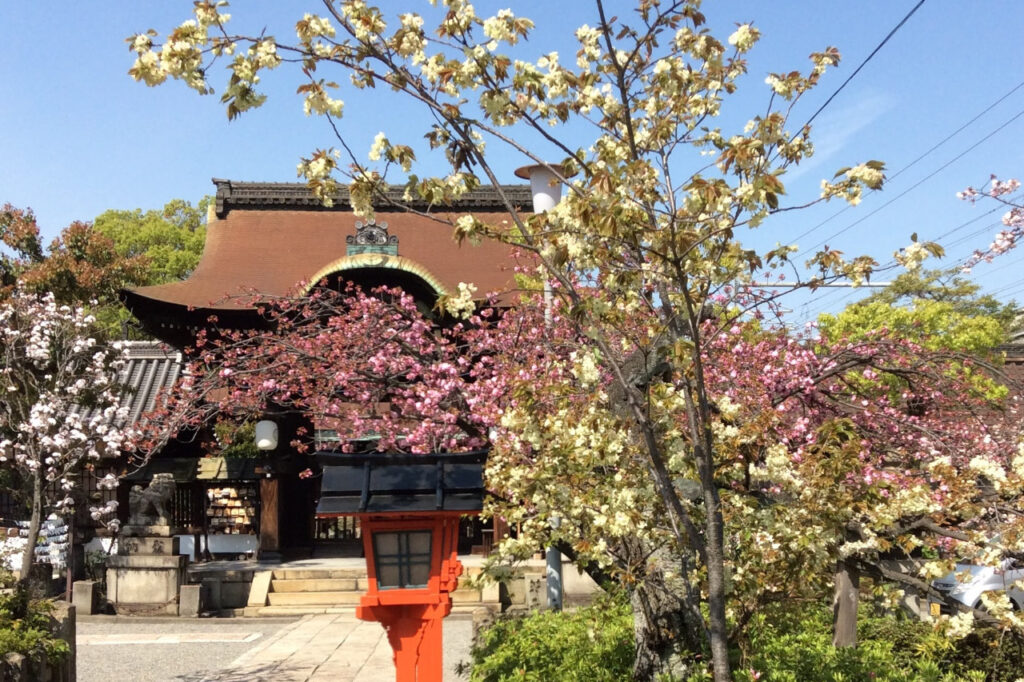

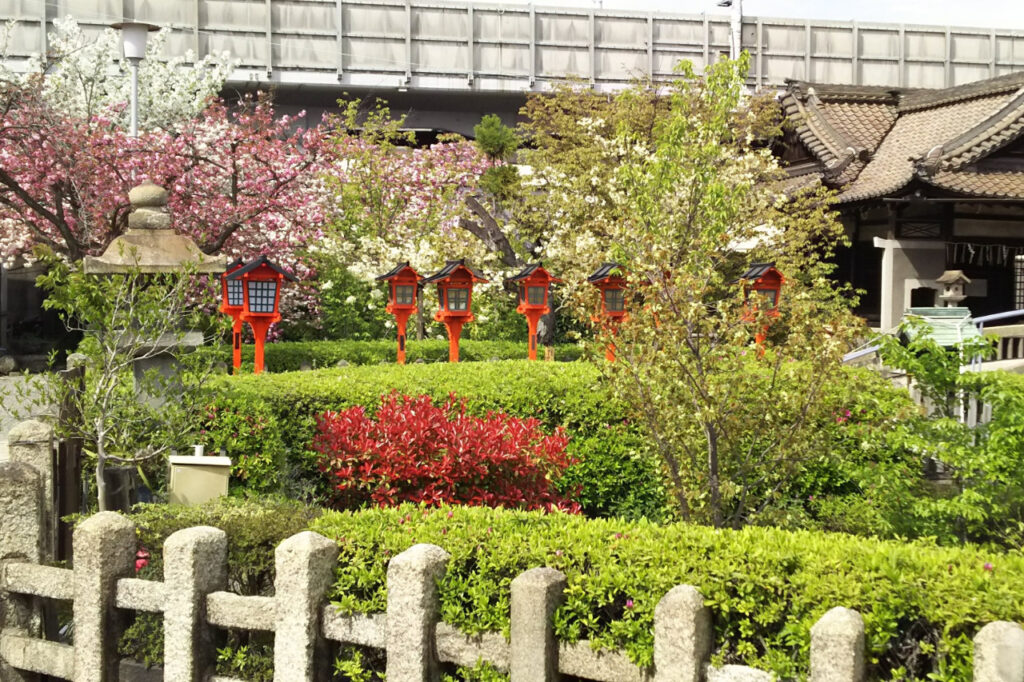

Best time to see: late March to mid-April
free to stroll (i.e. to take a stroll)
Over 600 interviews per year! An order site carefully selected by the editors who knows Kyoto and Shiga.
nowOfficial LINE friend registration500 yen OFF coupon is being issued!
Distributed every Friday morning at 8:00 am! From new restaurant information to event information that we want to share with you, We deliver articles about Kyoto that are useful to know. About 20,000 people have registered.Click here to add a friend!
 News
News Feature article
Feature article Featured event
Featured event